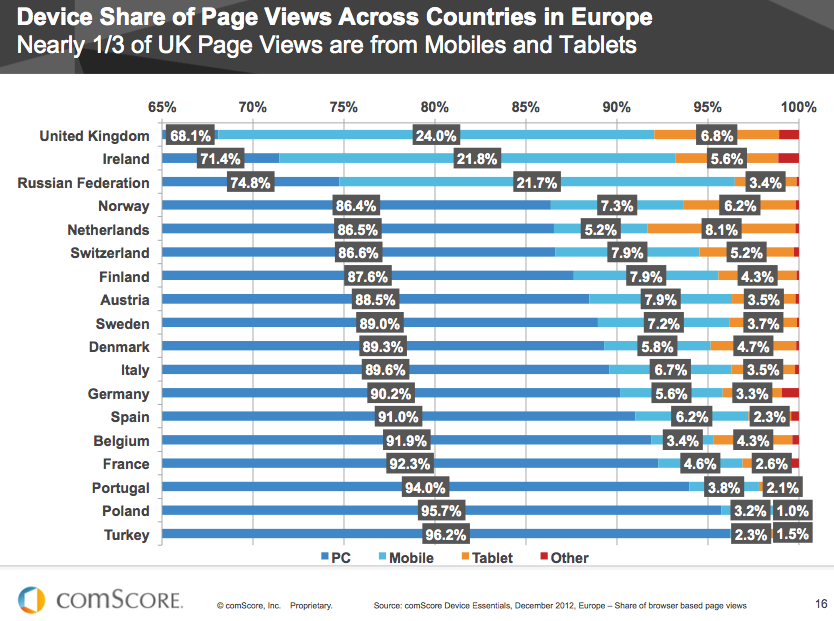Hey Munchkins!
The blogosphere is packed with content marketing tutorials, usually just repeating themselves over and over (and over…) while not teaching us anything new, unless they are about specifics niches.
My problem was that they all address bloggers or SEO fellas, while there are so many awesome audiences out there just dying to learn how to content-market their product. So in this guide we’ll be covering a strategy made entirely for App developers – Yup, that small crowd of tens of thousands out there.
If you got a cool mobile App and you’re clueless about marketing it, follow these steps along with our expert tips and find out how to do content marketing right.
Define your App users
Your first step in creating a content marketing plan is define your audience. Typically app developers have their users in mind, but this can often be quite broad.
If you have a nifty soccer-game App, then most likely you need to target the demographics of 12-26 year old boys. If it’s a news curator, then I would go for 24-40.
Which country they are most likely from? What are the crowd’s interests?
Focus on a few typical users, creating profiles to which you can cater your content. If you’re in seeking investors, looking to boost your company’s valuation, or looking for advertisers you’ll want to include these folks as well.
Here is a very helpful resource by SmartInsights about Mobile Statistics, updated to March 2014. This is very helpful to understanding your audience.
Key takeaway #1: Know who will read your content.

Take an inventory
What content assets do you have already? This includes blog posts, infographics, press clippings, images, videos, and interactive media.
If your App is already up and running for months, then you must already have some data to exclusively publish on behalf of your expertise.
For example, if you added a Facebook login option to your App and it boosted up engagement by 200%, there are literally dozens of great blogs that would love to publish that fact with a credit to your App page.
Produce an infographic to illustrate that fact, or any other fact that you can extract from your users.
Once you see what you have, see what you can create with your existing staff. You might be surprised with the talents your staff members have and the great content that they can create.
If you have the budget, outsourcing content creation is also an option.
P.S – if your App doesn’t have its own website & blog, then you have the worst starting point ever. FIX it as we speak!
Key takeaway #2: plan what will be published. You don’t need to keyword-research on every topic, the viral factor teaches us that sometimes creating news instead of fighting for existing ones – brings a lot more attention.
Create an editorial calendar
As an app developer, you’re already familiar with deadlines and tie-ins to the calendar year – and you know what’s in the pipeline or not.
Working with your team, create an editorial calendar outlining in as much or little detail a plan of content creation. Ideally, you should have your content planned from a month ahead of time.
A good company blog will entertain, give visitors a reason to use your app, and gently incorporate keyword research.
Key takeaway #3: plan when will it be published.
Outreach & Contribute
Now that you have your content and an idea of when you’d like it published, it’s time to do outreach.
Create a list of related blogs and other sites where you’d like to post some of your content. Be sure your content is relevant to their coverage and start sending emails.
An App developer will want their guest posts published in websites that suit their exact Niche. If your App helps online marketers, then you need top tier online marketing blogs.
If you have a fashion-related App, then off you go to pitch Fashion bloggers.
When pitching blogs to feature your content, make sure your content is not only relevant, but quality information that adds value to their site. Scroll through 4-5 pages and discover what they usually accept.
Key takeaway #4: Find specific websites and outreach.
Get reviewed
Besides guest posts, there’s also the obvious need of having your App directly reviewed in popular websites.
Make a list of the top app review blogs and reach out to them. A short email that demonstrates that you’re familiar with the site and that your app is relevant is a good way to start. Another effective way to reach app review bloggers is by following them on Twitter and engaging with them.
I would not recommend you to twitter-spam the official accounts of the websites, most of them are packed with pending requests and won’t reply.
Instead, head over to the website’s About/Team section, pick 1-2 reviewers or editors that you think might like your App and follow THEM on twitter. A good starting point would be re-tweeting one of their reviews with a compliment, and only then moving on to tweeting them about your amazing new App.
Key takeaway #5: Approach App reviewers with confidence – but be gentle.
Spread Your Content Around
Once your guest post, infographic or any other visual has been accepted to a great blog, your work is just getting started – and this goes also for your own app’s blog posts.
You should have active accounts in platforms like StumbleUpon, Reddit and HackerNews – which are all unbelievably great in driving traffic to your App’s page or related content.
Just make sure not to abuse them by sending the same content over and over – your account will simply be banned.
Use Google+ discussions to get incoming traffic; find active Developers communities (they are a dime a dozen) and try to entice a discussion about your content.
Key Takeaway #6: The readers are out there, it's up to you to find them.

Target and then retarget
When you visit a certain page, the website may save a cookie that adds you to a list of people that have visited that place or have performed a specific action. Here’s how it works to drive downloads:
Place a code from an advertising platform (Google, Adroll, etc.) on your App’s website and then use the platform to retarget users with inviting App banners.
The interesting thing about remarketing is that you can have different messages for visitors of different content. This is where your user profiles will come in handy.
Target visitors of particular posts with calls to action to download or use your app that are just for them. Follow them around the web and invite them to download your app. The same goes for visitors on your own site. You can use your own internal code to record where visitors go and display different content for specific user profiles.
Key takeaway #7: Chase visitors that read your App blog but didn’t convert.
Analyze, analyze, and analyze some more
People’s interests can be very changeable when it comes to content, so stay on top of your content marketing plan with analytics. Keep track of what works for you, what doesn’t work, and don’t get complacent.
And it all goes back to your audience, which also changes over time. Let’s say on one lucky day your app gets a mention on The View or Sports Center – suddenly your user demographics will shift and so should your content strategy. Current events should also influence your strategy as needed.
Key takeaway #8: Never stop analyzing and adjusting.
Bottom line
Creating a content marketing plan as a developer is more than just thinking of fun ideas for blog posts or clever calls to action; it’s using real strategy, outreach, and behavioral analytics to drive your content.
The competition out there is fierce, with more than 1 million apps offered per device, but a viral App is one that interest people – and what’s more interesting than great content?
